The days of using Excel spreadsheets, non-integrated software, and a handy pencil-and-paper system to track technology assets are long gone. Today’s schools need modern solutions to manage their assets.
Why Is Asset Management So Important?
Managing assets is critical for five key reasons:
- You prevent property loss. $1 billion of equipment goes missing from companies every year. Using a barcode or RFID technology, you can track your school’s assets to avoid misplacement or theft. With tracking software, the IT team and the instructional team can know where a piece of equipment is and who is responsible for it at all times.
- You avoid excess purchases. Ever bought new equipment only to discover you already had a closet full of the same thing sitting there unused? Inaccurate tracking can result in shortages or excesses of assets that require making fast purchases instead of smart ones. An asset management system helps you avoid making purchases you don’t need.
- You can help prevent or manage equipment breakdowns. When the IT department knows what assets the school owns, their condition, and their location, it’s easier to stay current on preventive maintenance. Tracking the assets electronically also makes sure the department gets informed of a malfunction as soon as it happens so they can repair or replace a defective piece of equipment right away.
- You make sure you’re keeping software up to date. One of the most effective cybersecurity strategies is simply downloading the latest iteration of a software package as soon as it’s available. But you can’t stay abreast of software updates if you don’t know what software packages you own or what version you have.
- You maintain asset visibility so you’re able to use what you have. You can’t use a tool that you don’t know you have. Tracking assets ensures that teachers know what’s available so they can create technology-enhanced learning experiences. IT directors need to know what pieces they have so they can keep them updated and in good working order. And school leaders need to know how much to budget for technology assets, an impossible task if they don’t know what’s there.
Pitfalls of Manually Tracking Assets
Traditionally, schools tracked assets using a paper and pen or a spreadsheet program such as Excel.
In the modern world, there’s no reason to resort to a pen-and-paper system. Manual data entry is prone to mistakes, and there is often no way to catch those mistakes before they have a widespread impact.
That’s why schools and companies switched to spreadsheets. The problem with Excel and other spreadsheet programs, though, is that they are clunky. You have to work around several columns and navigate your way through a system designed for budgets, not barcodes.
Additionally, using an Excel document or a similar spreadsheet eliminates accountability. Because Excel doesn’t allow for single user sign-on or track who makes changes, it is impossible to know what or who caused an error, when that error was made, or how it happened.
Finally, districts lose control of their technology inventory through bad practices such as:
- Technology equipment gets shipped directly to campuses or departments when purchased.
- Some districts rely on campus or department personnel to keep complete track of their inventory through an excel spreadsheet.
- A lack of mandatory inventory reconciliation
- Transfer or disposal of equipment is not recorded.
For those reasons — and many others — you need integrated asset management software.
Why You Need Integrated Asset Management Software
What is integrated asset management software?
An asset management software helps you assign, track, and audit all your assets — the pieces of technology your school owns. Not only can you keep inventory in the system, but you can also purchase, manage, maintain, and dispose of software through this platform.
What do you mean by “integrated” asset management?
At One to One Plus, we talk about integrated asset management software because our platform lets you manage all your technology assets in one place. We also include a help desk and work order management system that allow staff and students to submit requests, route tickets efficiently, and let technicians update and close tickets from a mobile app.
6 benefits to integrated asset management software for schools
- Reduce complaints from students and teachers. When people can’t communicate, they complain. An easy-to-use ticketing system, part of an integrated asset management platform, makes it easy for staff members or students to report problems. It also lets technicians provide real-time updates on repairs. A simple, automatic communication pipeline cuts down on complaints.
- Monitor your equipment’s condition. Has your equipment fallen off a cart? Is it in a storage location that is too hot or too cold? Is it running too slowly? An asset management platform lets the IT team see where equipment is and what conditions it may be living under.
- Easily locate your assets. You don’t have to chase down anything. An asset management software system knows exactly where your laptops, charging cart, and SmartBoard got to.
- Prevent theft. Sometimes lost equipment is just that — lost. But sometimes, people steal things. However, those same people are much less likely to steal if they know they are being watched. An asset management tracking software that tags an item can help reduce the occasional temptation to pilfer products.
- Know where your assets have been. Knowing where pieces of technology spend most of their time lets administrators see which students and teachers are accessing resources and which ones aren’t. School leaders can also discover which resources get used often and which sit in storage.
- Budget better for next year. Data never steers you wrong. Integrated asset management software helps provide data to the people responsible for creating a technology budget. They’ll see what devices teachers use, the cost to maintain those devices, the time that technicians spend fixing each piece of technology, and other important information.
An integrated asset management software system is an effective way to track assets and improve an IT department. It works a lot better than a pencil and an Excel form.
K-12 asset management K-12 asset management K-12 asset management







